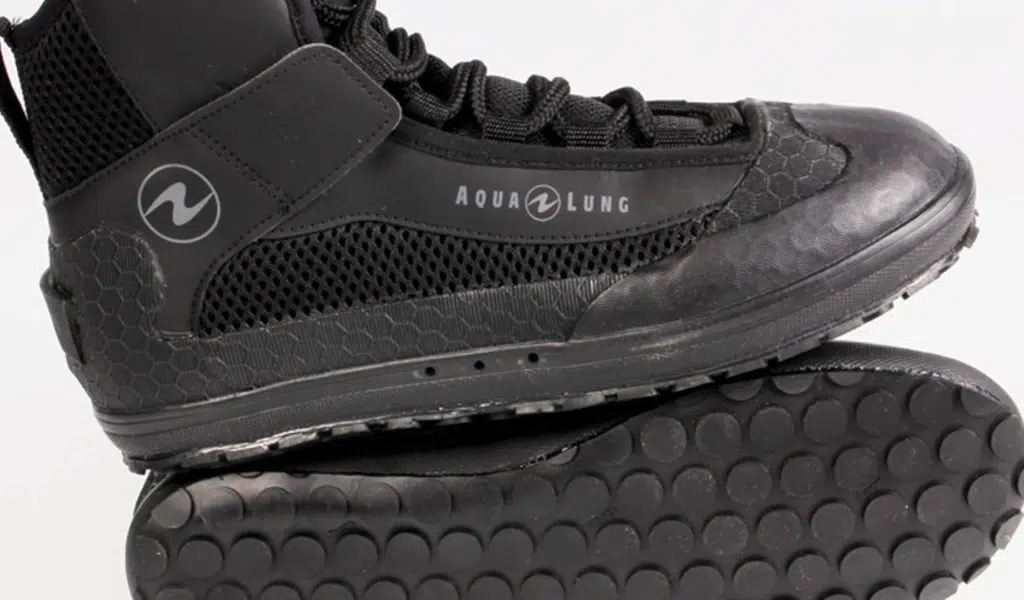An overview of the different boot options on seaskin drysuits.

All Seaskin diving drysuits come with integrated dive boots as standard. These standard boots are medium weight offering a good compromise between foot protection, durability and flexibility. Sole thickness is important walking across a stoney carpark or rocky shoreline with a heavy twin set can be painful on the feet if the boots soles are too thin. If the are too thick not allowing the foot to flex well will compromise your finning action and possibly leading to cramp in the muscles. Rubber overlays on the top of the boot also protect your foot from rubbing from the fin pockets. So we can be sure of being able to keep all ten sizes in stock the exact model of the boot fitted may vary but the all will be a good grippy rubber sole with reinforcement and fin retainer built around a 5mm neoprene inner.
A lighter version than the standard boot is the Tech Boot this is built around a 3mm neoprene liner with a thinner sole and less reinforcement across the top. This results in a boot than excel when finning being ultra flexible, the ankle strap with Velcro adjustment holding the boot securely in place. The compromise here is between superb comfort in the water and less foot protection and long-term durability. Being made from a thinner neoprene they are not quite as warm as the standard boot so thicker socks should be worn in colder waters. They do reduce the weight of the complete suit by about grams which may be important to you if you are watching your baggage allowance.
The option to switch to compressed neoprene socks is increasingly popular. Firstly note that socks should never be used without another boot over the top. This can be as simple as pulling a pair of zipped wetsuit boots (which you may already have) over the top, but bear in mind that you will at least one pair of thickish socks on under the 3mm compressed neo sock so it will be a bit of a squeeze. A pair of zipped boots the next up than you normally take could be a cheap warm alternative to a proper “rock boot”. Another alternative is a cheapo pair of Converse, again a size bigger than normal is best. This combination is preferred by many as it forms less of an air space around the feet so the sensation at least of floaty feet is much reduced. Another plus for this system is that over-boot type can be changed according to the type of diving you are doing that day, some pro divers even switching out to steel toe capped boots when dealing with heavy equipment. Finally being able to turn the whole suit inside out is great help when servicing or drying out your suit.
Latex socks and as an option give a good weight saving but they are more prone to damage. The ultimate weight saving are ankle seals but these are only suitable to warmer waters.
I hope this quick run through of the boot options gives you clearer picture of the merits of the different possibilities.
